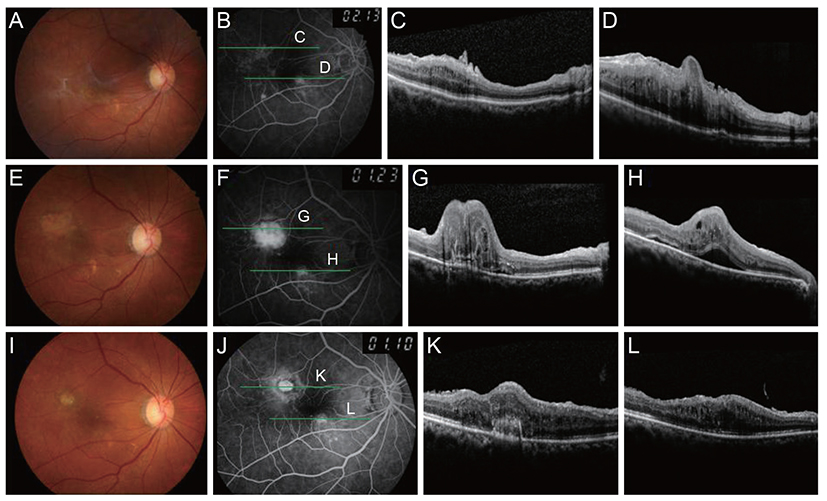Korean J Ophthalmol.
2015 Dec;29(6):439-440. 10.3341/kjo.2015.29.6.439.
Choroidal Neovascularization Following Epiretinal Membrane Peeling
- Affiliations
-
- 1Department of Ophthalmology, Seoul National University Bundang Hospital, Seoul National University College of Medicine, Seongnam, Korea. sejoon1@snu.ac.kr
- KMID: 2363855
- DOI: http://doi.org/10.3341/kjo.2015.29.6.439
Abstract
- No abstract available.
MeSH Terms
Figure
Reference
-
1. Fang X, Chen Z, Weng Y, et al. Surgical outcome after removal of idiopathic macular epiretinal membrane in young patients. Eye (Lond). 2008; 22:1430–1435.2. Goh YW, Ehrlich R, Welch S. Iatrogenic choroidal neovascularization following idiopathic epiretinal membrane peel. Digit J Ophthalmol. 2013; 19:9–12.3. Warden SM, Pachydaki SI, Christoforidis JB, et al. Choroidal neovascularization after epiretinal membrane removal. Arch Ophthalmol. 2006; 124:1652–1654.
- Full Text Links
- Actions
-
Cited
- CITED
-
- Close
- Share
- Similar articles
-
- Effects of Internal Limiting Membrane Peeling in Combined Hamartoma of Retina and Retinal Pigment Epithelium
- Analysis of Leading Diseases Causing Epiretinal Membrane and Comparison of Prognosis after Epiretinal Membrane Peeling
- The Effect of Internal Limiting Membrane Peeling in Treatment of Idiopathic Epiretinal Membrane
- The Effect of Internal Limiting Membrane Peeling in Epiretinal Membrane Including Pseudolamellar Macular Hole
- Internal Limiting Membrane Peeling In Surgical Treatment of Macular Epiretinal Membrane


